In a fast and chaotic world, employee engagement is more significant than ever. But as employees adjust to the new normal, it’s important to inform your engagement strategy with the latest employee engagement statistics.
Do you know where your company stands when it comes to employee engagement statistics?
In this post, we’ll break down the latest employee engagement statistics and what they mean for your business.
Take a self-guided tour of ContactMonkey
See how our key features can streamline your internal communications.
Take product tour

What is Employee Engagement?
Employee engagement is the measure of involvement and emotional connection that staff experience in relation to their company. In practice, that means reaching out to help others, taking initiative in projects rather than waiting for tasks to be assigned, and bringing energy and enthusiasm to the workplace.
By inspiring employee engagement, businesses can improve their performance and gain a competitive advantage in their industry. Employee engagement statistics help quantify overall engagement trends so internal communicators can adjust their strategy and reach their employees more effectively.
Why is Employee Engagement Important?
Employee engagement is important because it drives workplace productivity and even business profits. Not to mention, engaged workers experience higher rates of employee satisfaction and greater loyalty to the company.
Yet, despite all these benefits, many employers are still neglecting employee engagement—and the numbers show it.
Let’s take a look at the latest statistics around employee engagement—the good, the bad, and the ugly—and see what they mean for your business.
10 Statistics About Employee Engagement in The Workplace
Employee engagement is more than a sign of happy and satisfied workers. Its impact extends to just about every nook and corner of your business—from employee productivity to customer service and everything in between. To really understand this phenomenon, all it takes is a look at employee engagement statistics. So let’s get to it!
1. Global employee engagement statistics
Only 20% of employees are engaged at work
Globally, employee engagement rates are far from promising. According to employee engagement statistics from Gallup’s recent State of The Global Workplace Report, workplace engagement rates have fallen by 2% from 2019 to 2020—the year the COVID-19 pandemic swept across the globe.
While the U.S. and Canada are at a slight advantage, with a 34% average employee engagement rate, the numbers remain disheartening.
That being said, how we come out of the pandemic remains to be seen.
Your takeaways:
Employers who emerge stronger are likely to be those who have learned from the new normal and are ready to adapt. Employees will want more flexibility, such as hybrid working options, and support as they return to the office. The key is to ask for employee feedback and continuously check in with your employees.
Wondering how to gather better employee feedback to inform your employee engagement strategy? Check out our complete employee feedback guide.
For remote and international employees, email is a crucial channel for maintaining employee engagement. You can refine your employee email process by using ContactMonkey’s List Management feature to reduce the number of irrelevant emails your employees receive.
Create custom email lists without needing IT to drive employee engagement. Your email lists will integrate with your Human Resource Information System (HRIS) like Workday and ADP, as well as Azure Active Directory, so they will automatically update as employees leave and join your organization.
Integrate your tools with ContactMonkey
Bring your favorite platforms together and save hours of work.
See integrations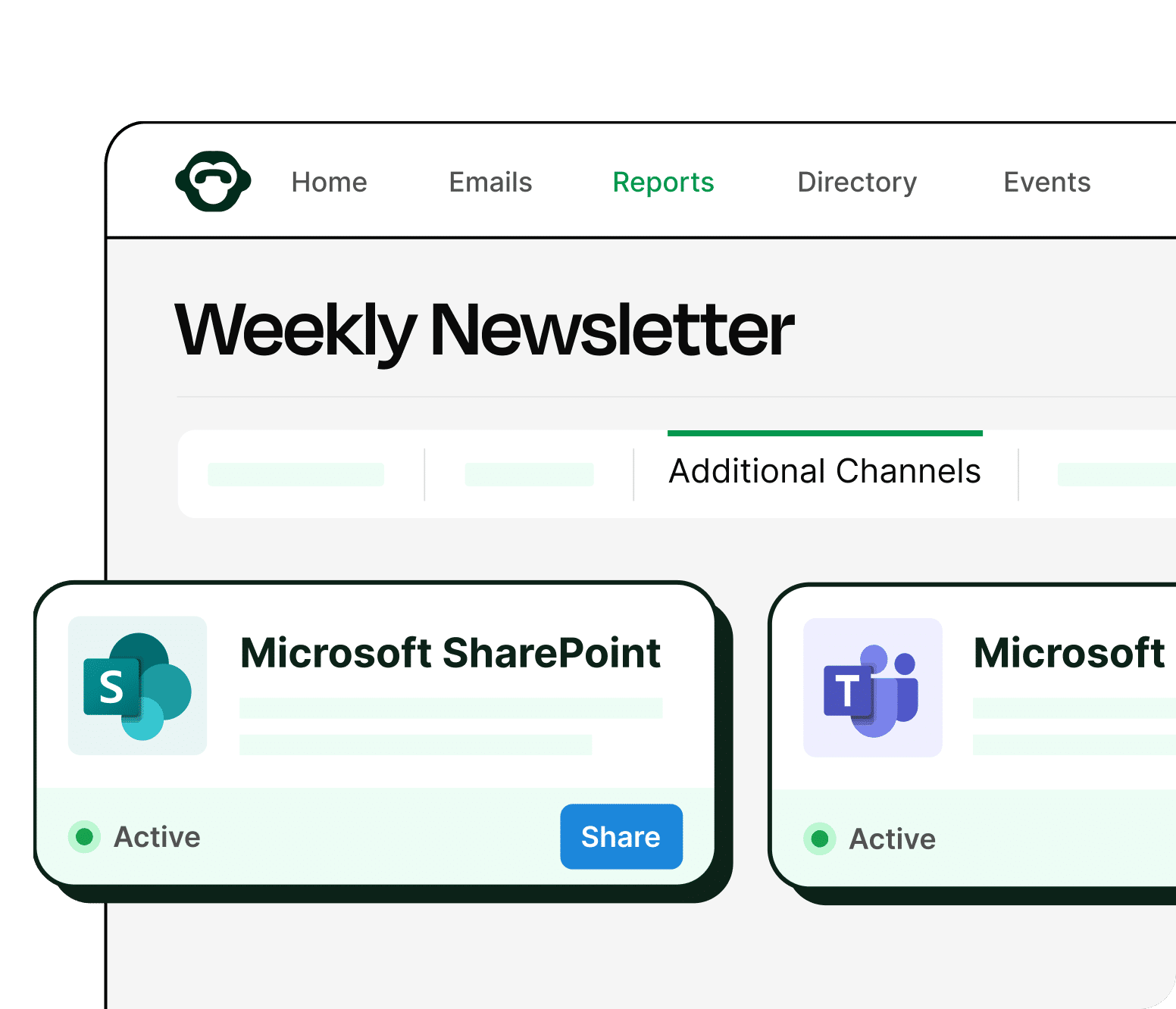
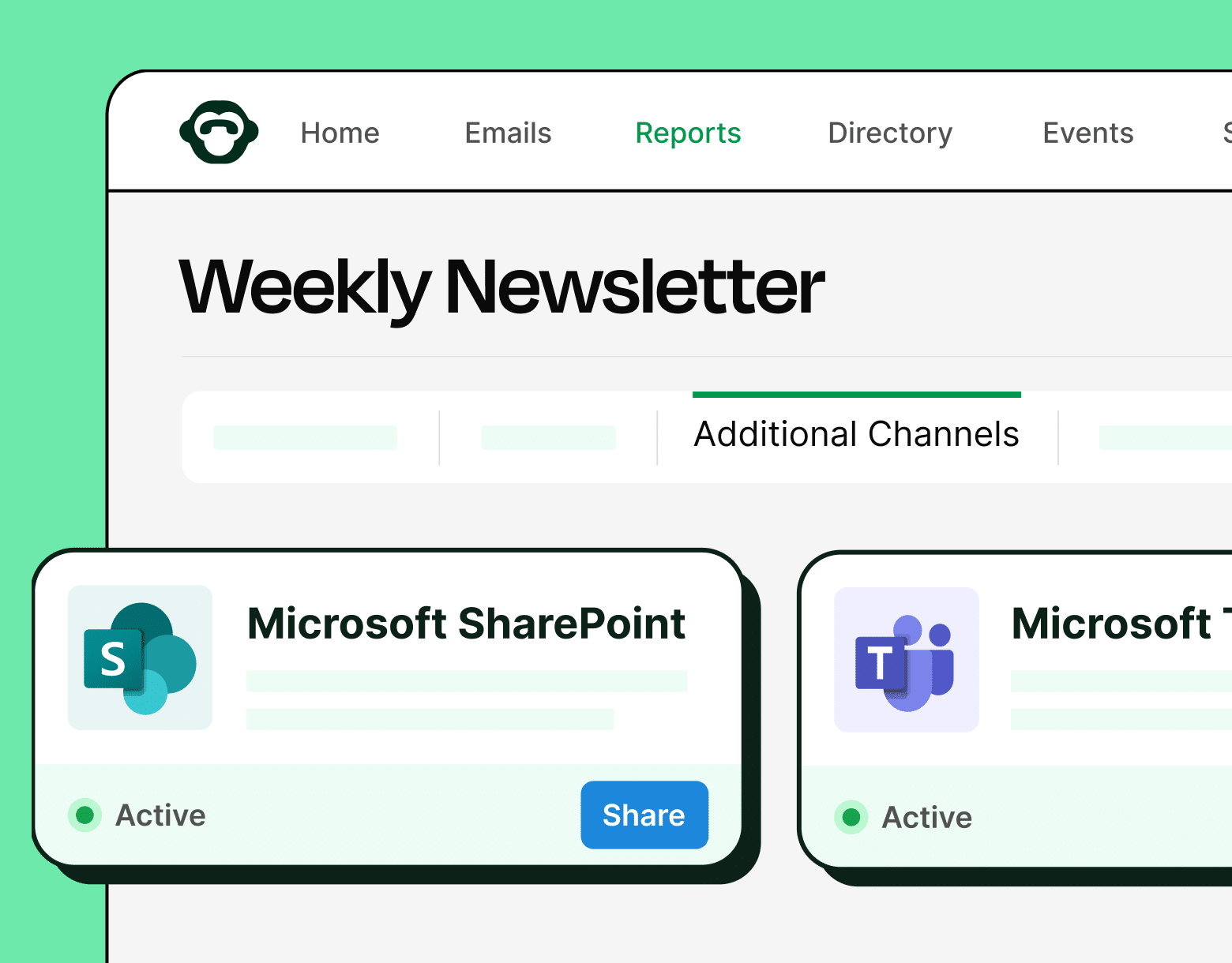
2. Employee engagement statistics and the economy
Low employee engagement rates cost the global economy US$8.1 trillion
Organizations with low employee engagement are costing the global economy—and that should be no surprise.
For starters, disengaged employees lead to higher workplace turnover. Seeing as it costs around 20% of an employee’s annual salary to replace them, that can be a significant loss. This is in addition to the impacts of employee disengagement on customer service, productivity, and innovation—which all take a toll on the bottom line.
Your takeaways:
Whichever industry you’re in, it’s hard to reach business success without economic success—and vice versa. If you want to play your part, start by ensuring employee engagement is a top priority in your organization.
Use the best internal communication platform that can track, measure, and boost employee engagement in one. ContactMonkey, will allow your teams to easily implement employee engagement best practices and measure engagement via employee engagement statistics. You can even find the best times to send employee emails so you can increase your overall open rate.
If your organization has internal or external regulations around email privacy, you can use ContactMonkey’s anonymous email tracking to gather email metrics while maintaining your employees’ privacy.
You can take your email metrics tracking one step further with ContactMonkey’s email analytics. Our Reporting feature allows you to compare multiple email campaigns to find your best performing email content.
3. Employee engagement and management statistics
70% of variance in employee engagement can be attributed to managers
When examining highly engaged business units versus those with low engagement levels, Gallup found that management played a huge role. This provides important insight into why employee performance varies not just across companies but from one team to another.
Your takeaways:
To dodge problems with management, it’s important to invest in proper training and strive to remove bias in management hiring practices. That includes ensuring diversity and inclusion in the manager recruitment process.
Make sure that the candidate who leads your team makes everyone feel seen and heard. It also means conducting regular employee surveys with questions about management performance, communication, and leadership.
4. Employee engagement and company profit statistics
Engaged organizations see 23% higher profitability
By now, there shouldn’t be much mystery as to why employee engagement impacts your company’s bottom-line. But Gallup’s latest employee engagement statistics really drive the point home.
A 23% increase in business profits as a result of employee engagement proves the ROI of employee engagement.
Engaged employees have a personal stake in your company’s success. They convey that passion and enthusiasm to your clients, increasing customer satisfaction, sales, and overall company performance.
Your takeaways:
If you want to make sure that fire doesn’t sizzle, it’s important to continuously measure employee engagement. With ContactMonkey, you can do this straight from your employee newsletter, using in-depth employee engagement statistics and an embedded employee pulse survey tool.
5. Employee engagement and employee absenteeism statistics
Employee engagement decreases employee absenteeism by 81%
When employees are regularly absent from work, it presents a serious issue for your business. There are the obvious drawbacks: a reduction in employee productivity, clients being left on hold, and backlogs in the pipeline.
But there’s also the added risk of employees becoming even less engaged as they disconnect more and more from the office and their colleagues. The result: a cycle of employee disengagement.
Your takeaways:
To reduce employee absenteeism, take stock of your employee engagement and retention levels early on. Conduct regular employee engagement surveys and learn what your staff like and dislike about being on your team.
You can also conduct an Employee Net Promoter Score (eNPS) survey to see how many employees would recommend your company to others. All it takes is a simple question, such as:
6. Employee engagement and wellbeing statistics
Engaged employees see 66% rise in overall wellbeing
Engaged employees aren’t just happy and satisfied in their jobs, they thrive in their personal lives as well. Case in point, Gallup’s latest study sees a 66% rise in employee wellbeing for engaged workers. In other words, engaged employees are less stressed, in better health, and feel not just professionally but personally fulfilled.
Your takeaways:
Employee wellness and engagement are closely linked. So incorporating wellness initiatives into your
strategies to increase employee engagement can have far-reaching benefits.
Wellness initiatives can take the form of workplace retreats, on-site Yoga lessons, or healthy catered lunches (sub in gift cards or virtual events for remote workers).
Whichever strategy you choose, ask staff what they’d like to see by gathering employee feedback through a wellness pulse survey. Employee feedback helps add a qualitative aspect to your employee engagement statistics. See how they rate their level of wellness at your workplace and ask for suggestions on what you can do better.
Start two-way conversations and employee feedback loops
Learn how to engage staff with pulse surveys, content ratings and reactions, custom polls, and more. Ready to send modern emails?
See engagement features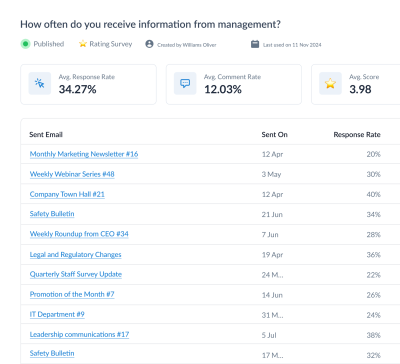
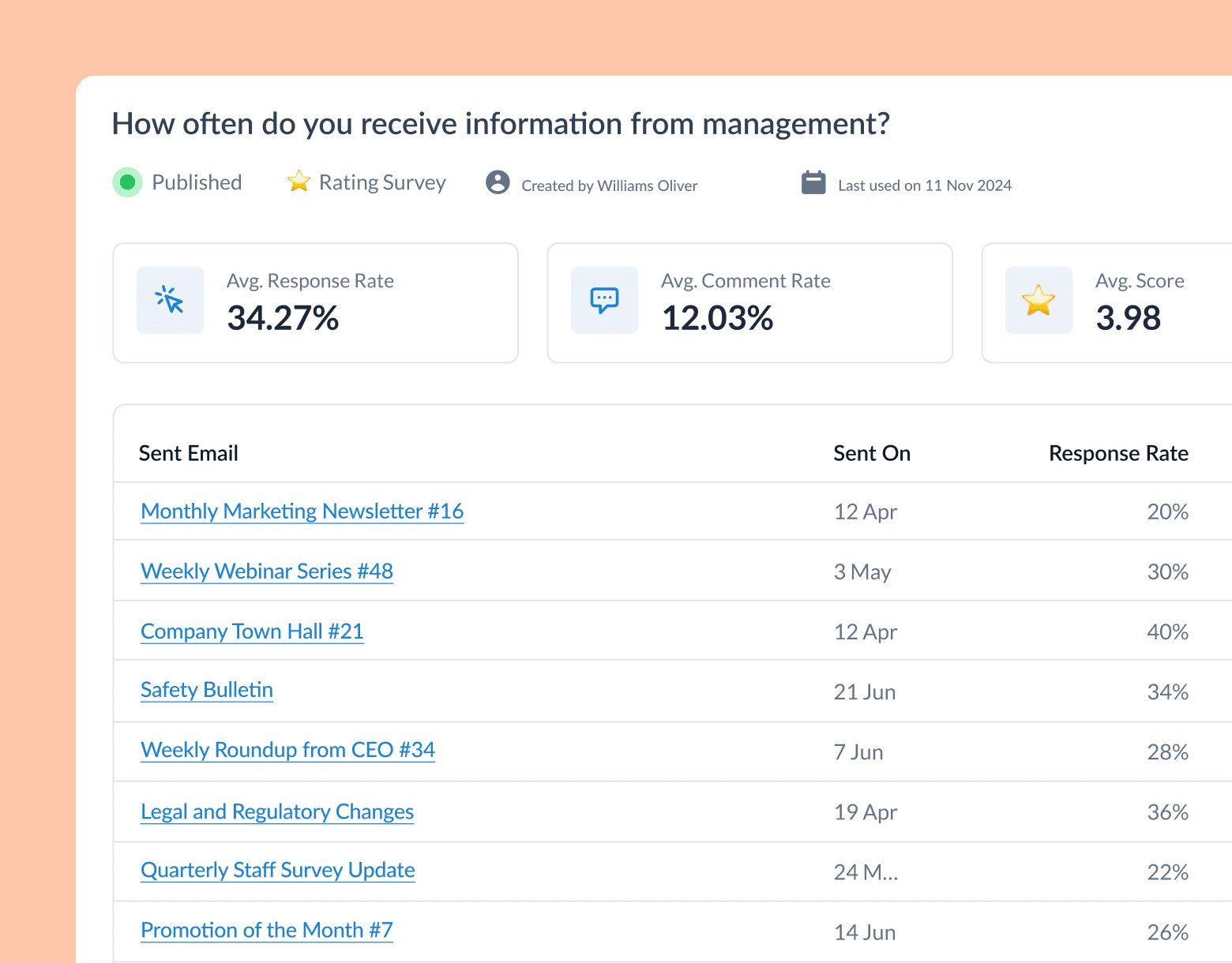
7. Employee engagement and customer service statistics
Engaged business units see 10% higher customer loyalty/engagement
Still not convinced about why employee engagement is important? Try looking at it from your customers’ point of view.
Would you rather engage with employees who are excited and passionate about what they’re doing or those who are bored and miserable in their jobs? How can you have confidence in a brand’s product or service when the company’s employees barely do?
Your takeaways:
Engaged employees bring energy and enthusiasm to their roles. They have confidence in your brand’s mission and values, conveying authenticity to clients. If you want to improve customer loyalty and satisfaction, start by inspiring your employees.
Use your employee newsletter to showcase brand values, recognize team players, share exciting company achievements and keep employees connected.
Improve your employee newsletter design by measuring email analytics and refining your layout with data collect from click maps. This quantitative data, combined with employee feedback via surveys, can help you ensure your employee email communicate information as effectively as possible.
8. Sales and productivity statistics
18% rise in sales productivity
With employee engagement driving customer loyalty, it’s no surprise that company sales also see a spike. Gallup’s employee engagement statistics show that engaged employees can be your greatest brand advocates.
Engaged workers have an impeccable ability to preach the benefits of brand products, and deal more effectively with customers, which equals to greater productivity when it comes to sales.
Your takeaways:
If you’re curious to see how many of your employees are brand advocates, conduct an eNPS survey in your next employee newsletter. With ContactMonkey, you can conduct your survey right from your employee newsletter. Then, check responses in your campaign dashboard alongside multiple other engagement metrics.
Get powerful email analytics and reporting features
Know exactly who is opening and engaging with your employee communications and company newsletters.
Explore analytics & reporting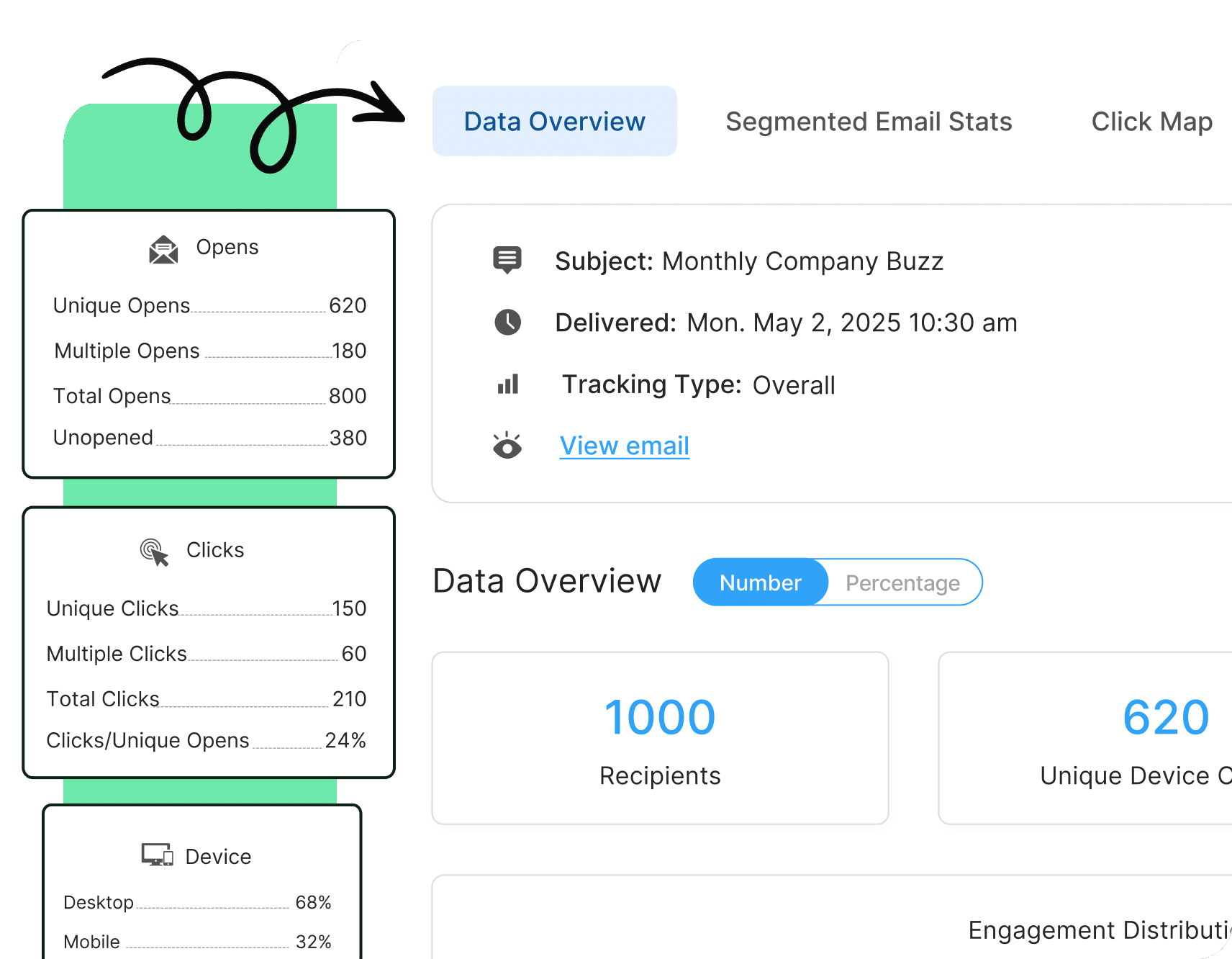
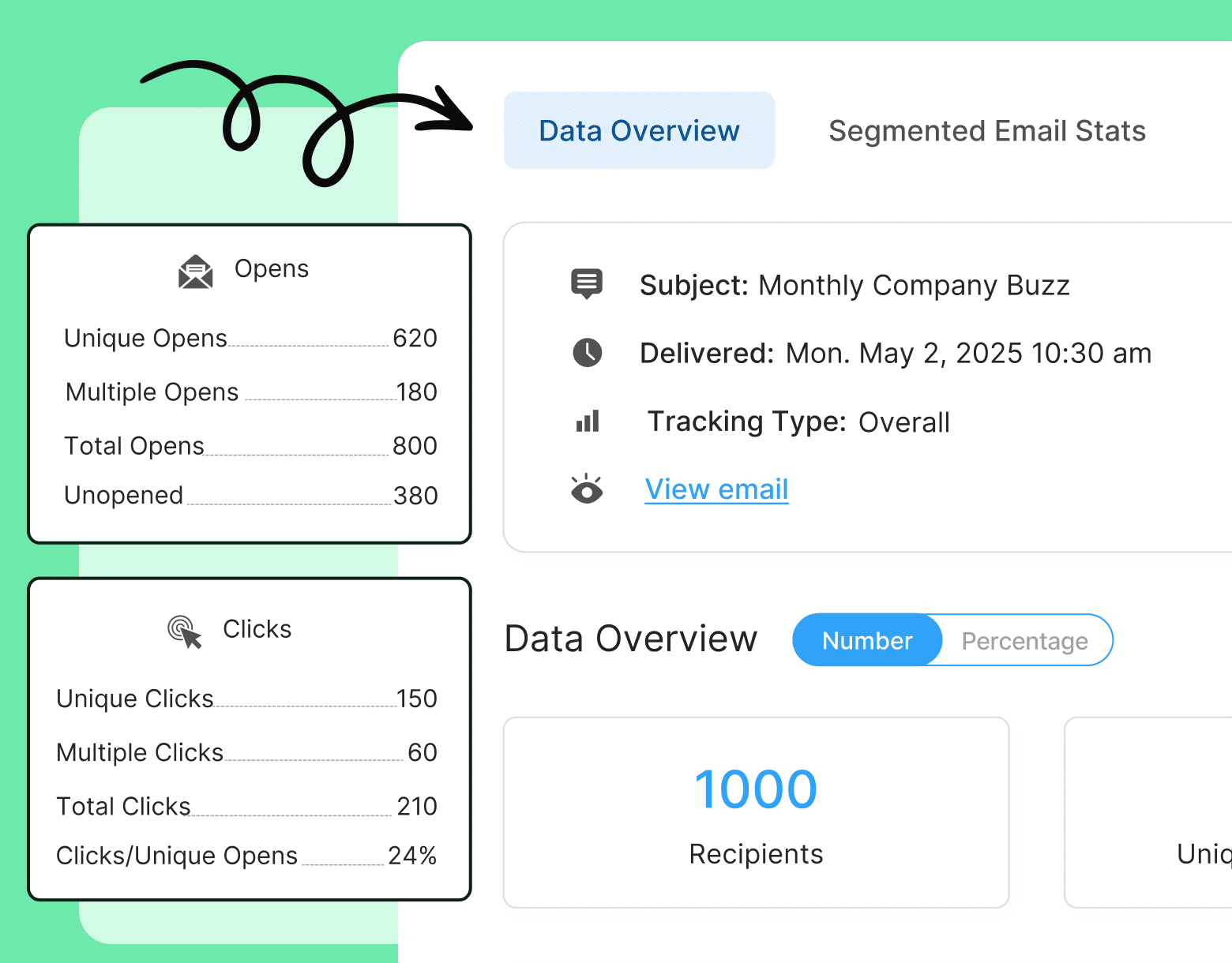
9. Employee engagement and safety statistics
Employee engagement leads to a 64% decrease in safety incidents
As we’ve been seeing, the benefits of employee engagement extend far beyond employee satisfaction or even productivity. Employee safety is yet another domain where employee engagement plays a sizable role.
Take the study of BP Oil, a company with a troubling track record when it came to employee safety.
When an investigation was opened to look into the countless injuries and even fatalities experienced at the company, it was clear that managers were only checking off boxes and doing the bare minimum when it came to safety.
Without concern for the future of the company or its workers, safety regulations were not being met again and again. The costs extended to the wellbeing of employees, while also costing the company financially.
Your takeaways:
To prevent safety issues in the workplace, investing in employee engagement is a must. A good place to start is by improving employee communication. Employees and managers who aren’t informed or involved in the company are rarely engaged.
With ContactMonkey, you can use your employee newsletter to easily share safety information and policies through smart links. Meanwhile, using the thumbs up/down feature on safety emails can ensure that employees have understood the information by checking reactions and responses in your analytics.
If your employee engagement statistics reflect low engagement, think about adjusting the way you present information. Learn which content resonates most with employees by comparing campaigns in your analytics dashboard.
10. Product quality and employee engagement statistics
Engaged business units see 41% decrease in product quality defects
If you’ve ever found yourself in a state of flow in your work—whether it was creating music, writing, or even engaging with patients as a front-line worker—you know the importance of engagement to the quality of your work.
When you’re engaged in a task or project, you’re giving it your full focus. And this is reflected in the final product. In light of this, it’s no surprise that employee engagement leads to a 41% reduction in product defects.
Your takeaways:
Engaged employees are diligent and determined in their work. If you want to deliver quality goods to customers, think about how you inspire and motivate employees.
Remember: employee recognition is a big part of employee engagement and can fuel employees with the drive needed to excel in their roles. Not sure where to start? Check out our list of the best employee recognition ideas.
How ContactMonkey Can Help Improve Employee Engagement
We hope these employee engagement statistics have given you a bit of inspiration (or a reality check) to prioritize engagement in your organization. While employee engagement is not an overnight miracle, by taking small, continuous steps, you will start seeing positive results in time.
If you’re wondering where to start, begin with effective employee engagement apps. ContactMonkey’s software includes a range of features to help you streamline your internal communications plan and boost employee engagement.
With ContactMonkey’s easy-to-use email template builder you can create beautifully designed internal emails and track their performance. This way, you’re set to track and improve employee engagement on all fronts, and create an informed employee engagement strategy.




